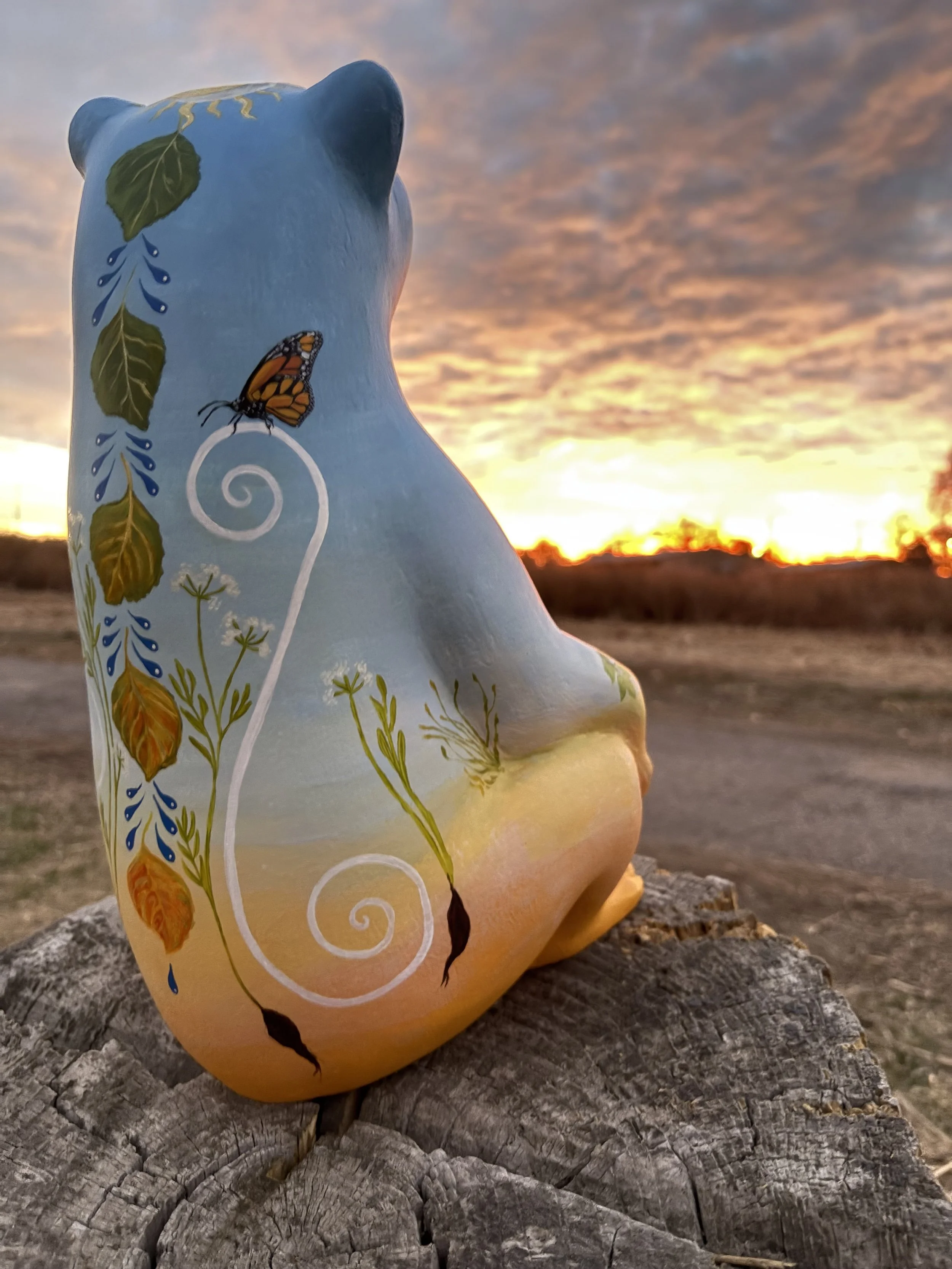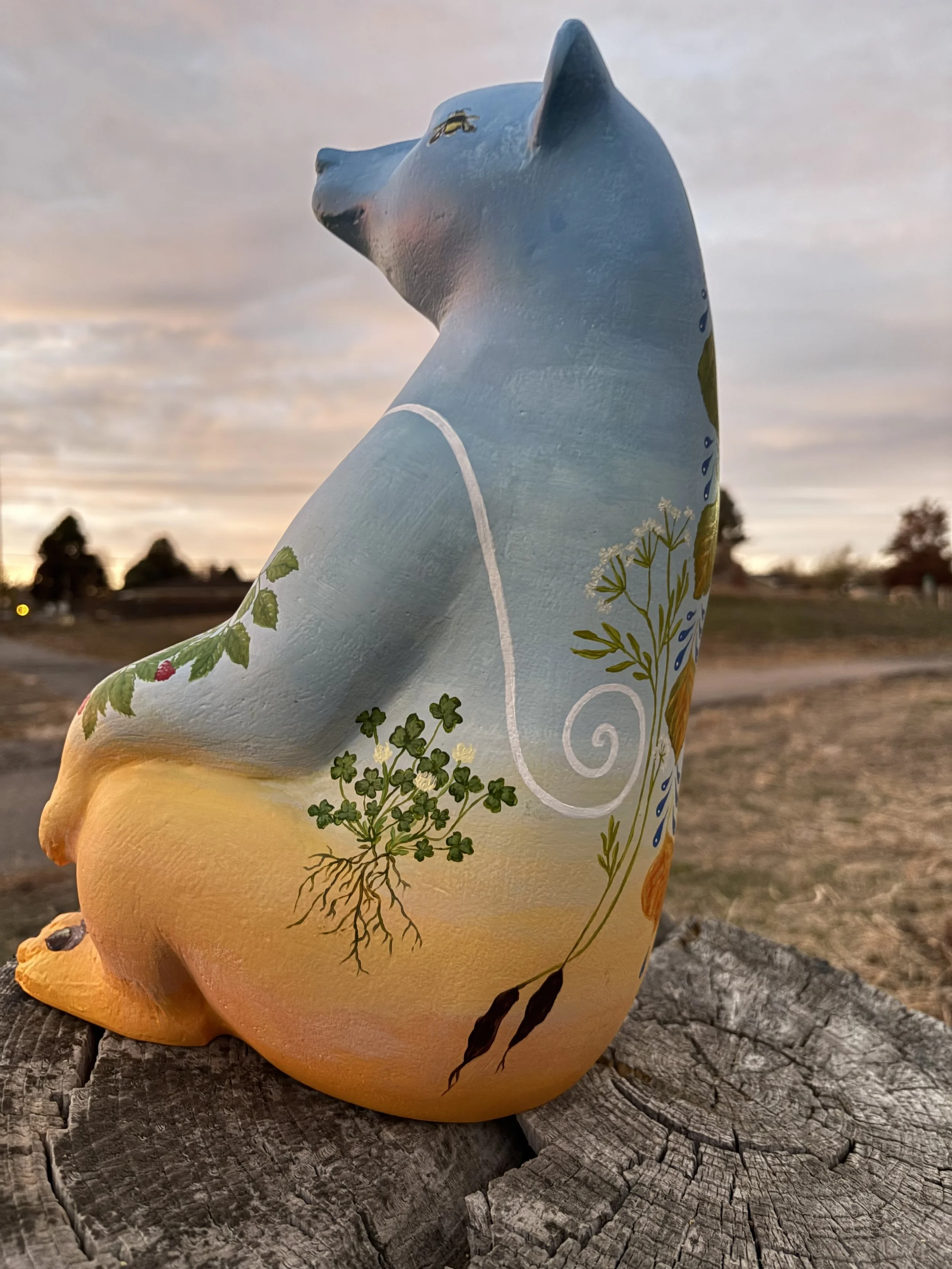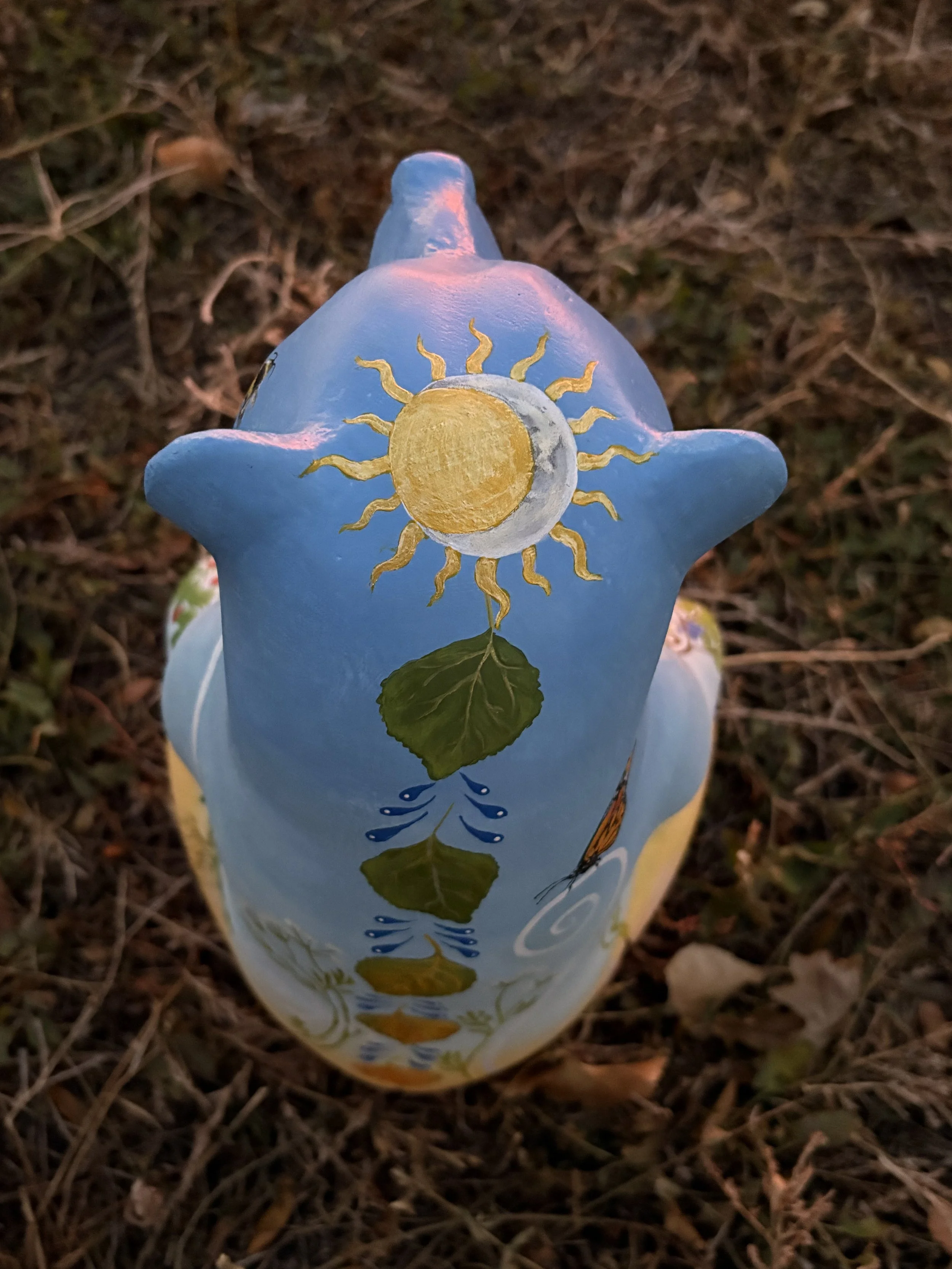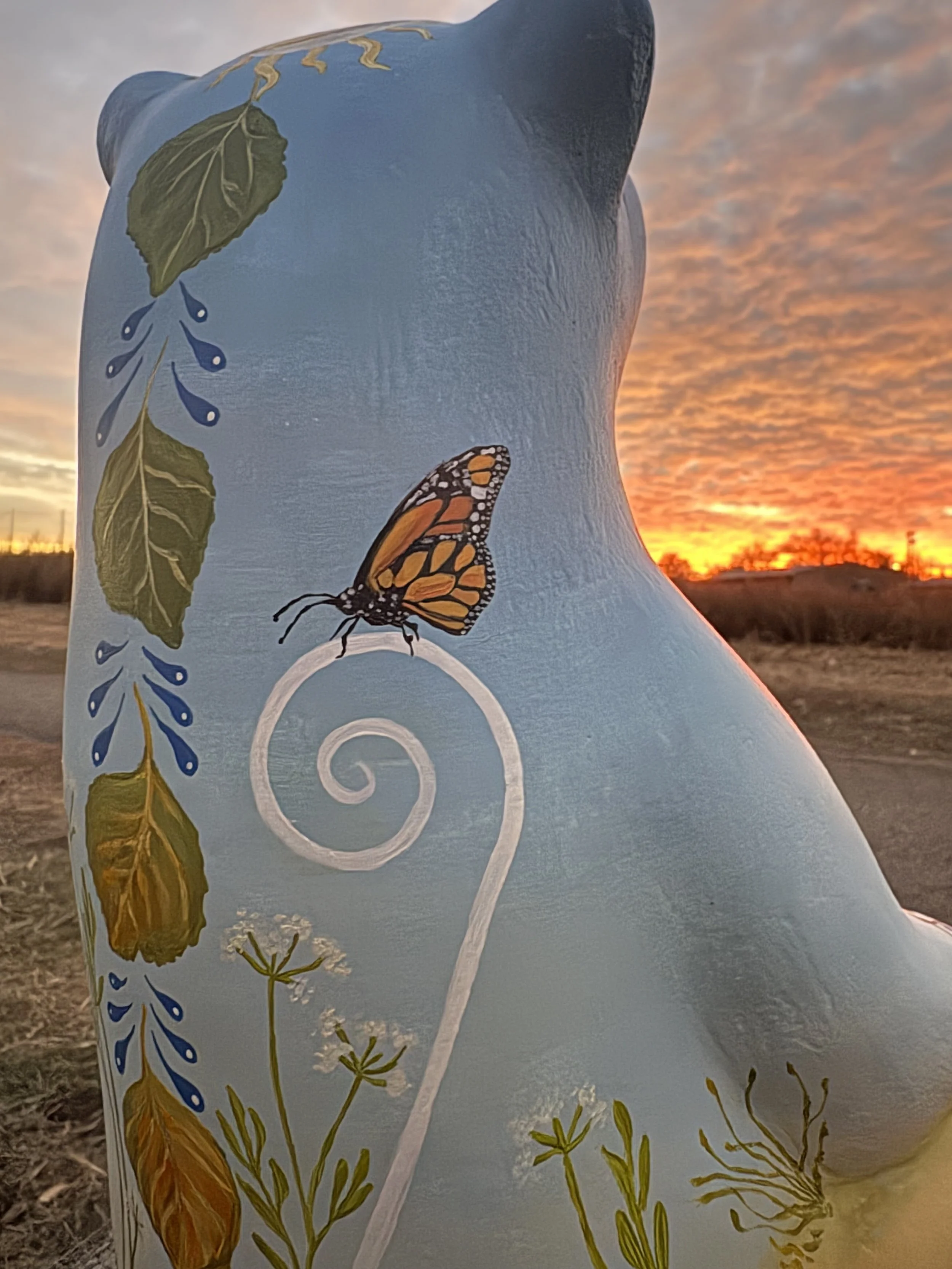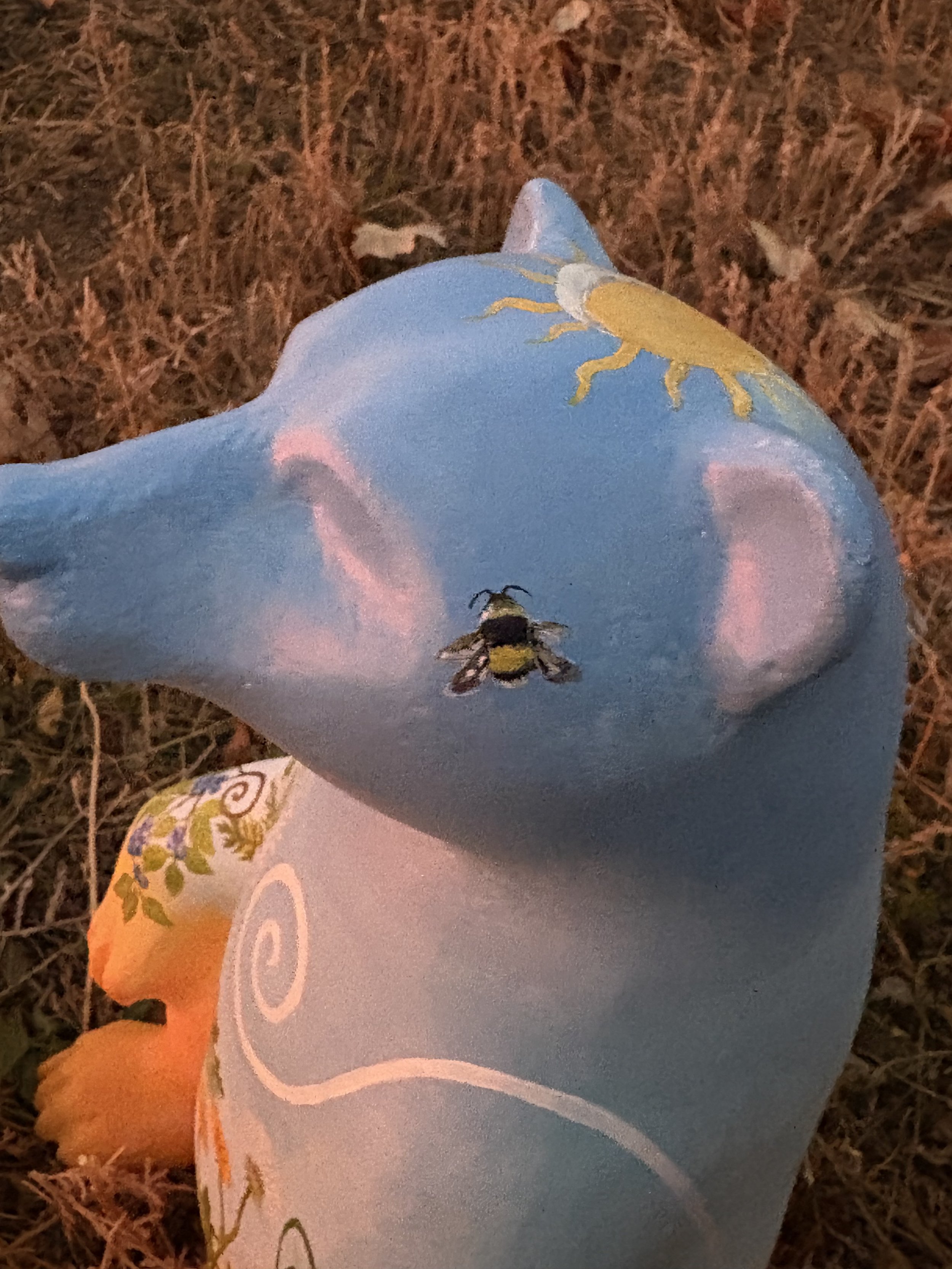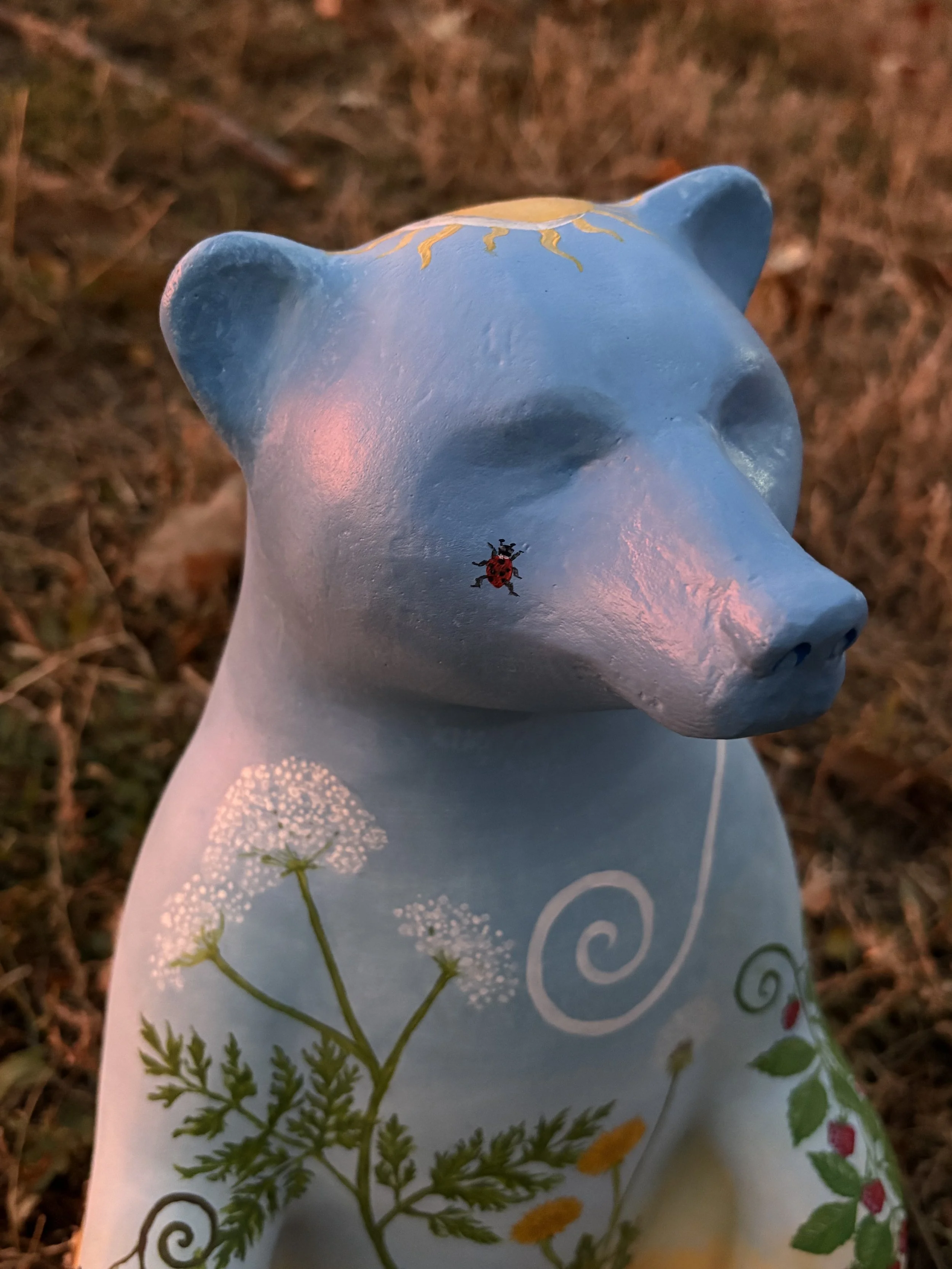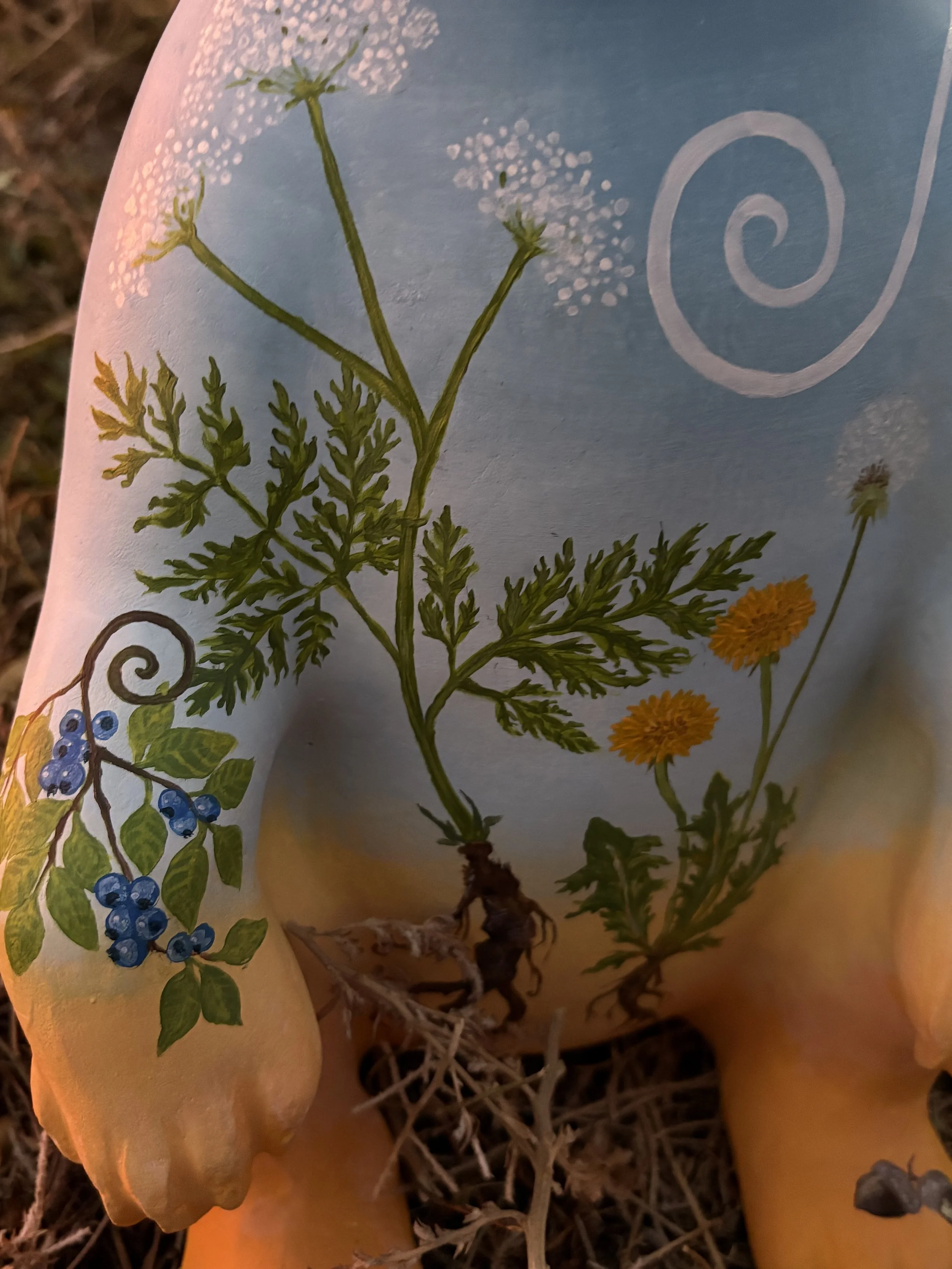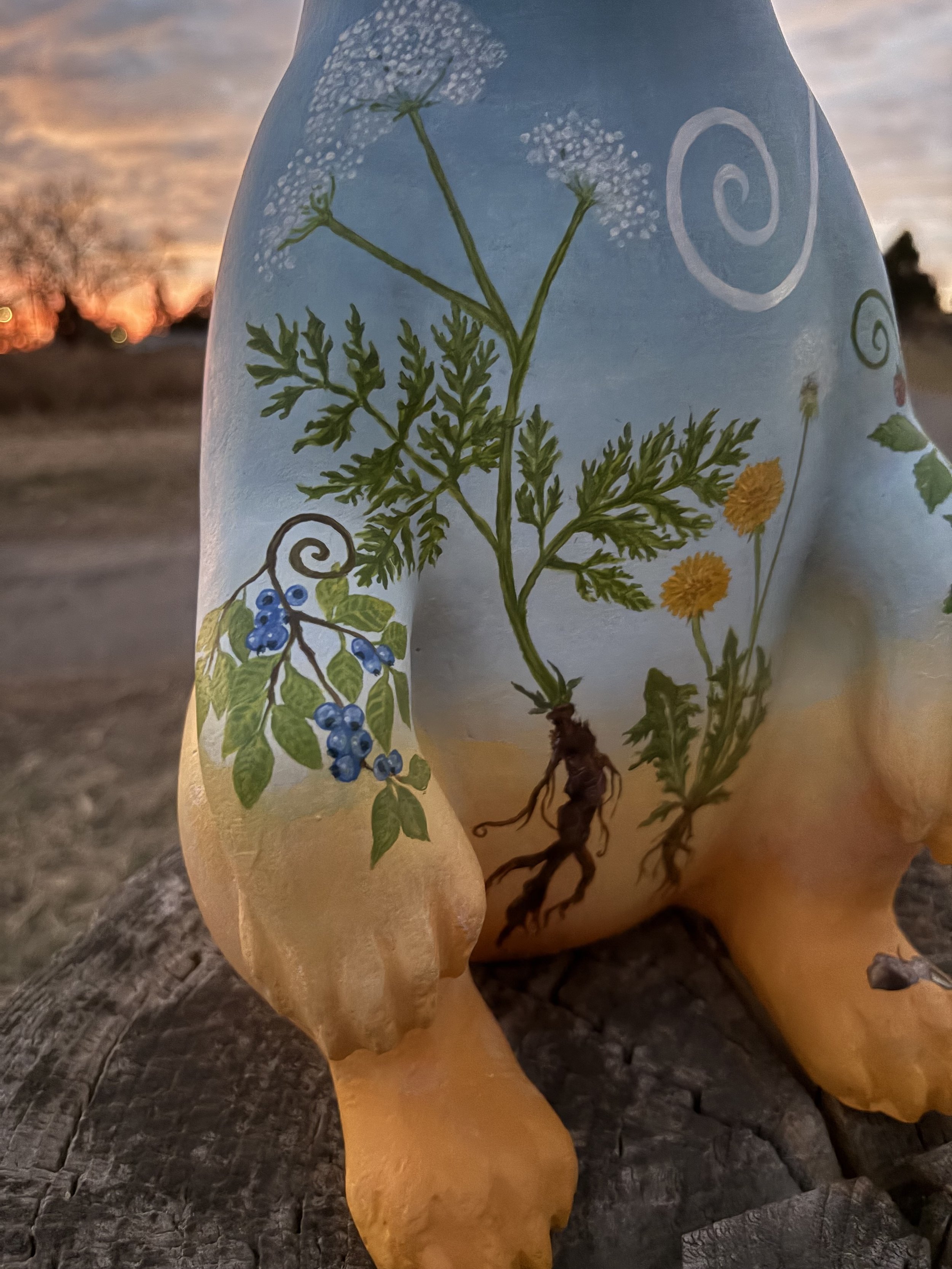In collaboration with The Colorado Chautauqua, I had the opportunity to paint this fiberglass bear sculpture, which will display and auction from the Boulder, CO location to benefit artists, the Colorado Chautauqua Association, and The New Local—a Boulder non-profit that benefits and showcases local, women, and non-binary artists.
Embellished with a multitude of plants, roots, and nuts that bears eat through the seasons, this sculptural artwork is a creative representation of intuitive balance.
momma bear
14”
acrylic paint and gesso on fiberglass sculpture
2025
plants and insects on display:
Osha, commonly known as Bear Root. Bears will eat the root after their long hibernation to reawaken digestion, and roll in the foliage or coat themselves in chewed root for its anti-parasitic qualities.
Dandelion— bears love all parts of the dandelion plant in spring, when food is scarce and foliage is more easily digested. They eat flowers, foliage, and roots.
Clover— similar to dandelion, bears eat clover leaves and flowers for protein in the springtime.
Yampa, which is visually similar to Osha root and part of the carrot family, is carbohydrate dense. Known by grizzly bears, the roots are excavated and eaten when starches are peak, just after the plant flowers.
Aspen— bears will eat aspen catkin, which are the flowery bits that appear in spring before leaf growth. In late spring and early summer, bears eat aspen leaves when they are highest in protein and easy to digest.
Wild Raspberries and Blueberries— during summer months, bears feast on native berries, which are high in essential carbohydrates and vitamins. These help bears prepare for hibernation.
Acorns, nuts, and seeds— in the fall months, bears will forage acorns, nuts, and seeds to help build fat reserves for the long months of hibernation. This period of hyperphagia (incessant hunger) is essential for bears to survive the winter, and particularly important for female bears to successfully carry their cubs to term. During hyperphagia, bears will consume upwards of 20,000 calories per day.
Monarch Butterfly— in early spring, monarchs begin their migration northward, seeking their sole host-plant, Milkweed. They lay eggs, pollinate, and overwinter in the warmer climates of the Sierra Madre mountains of Mexico or the forested regions of California.
Honey Bee— as essential pollinators and honey-makers, bees are also a high protein food source for bears. Bears will eat honey, bees and larvae alike to bulk for winter.
Ladybug— providing both pollination and pest control, ladybugs are known for their voracious appetite for smaller species like aphids, mealybugs, and mites.


